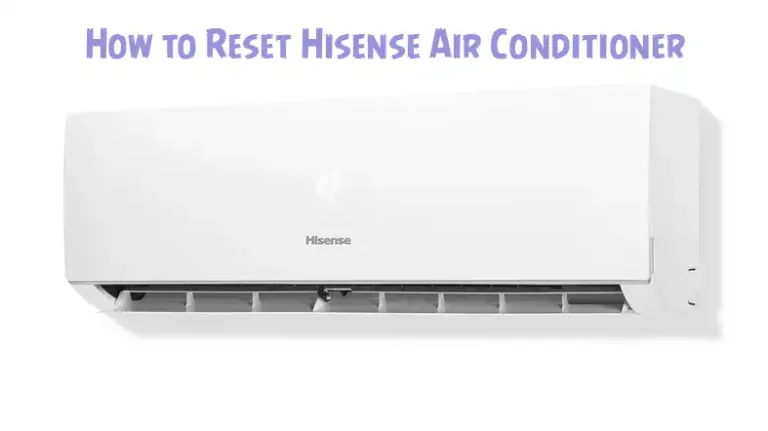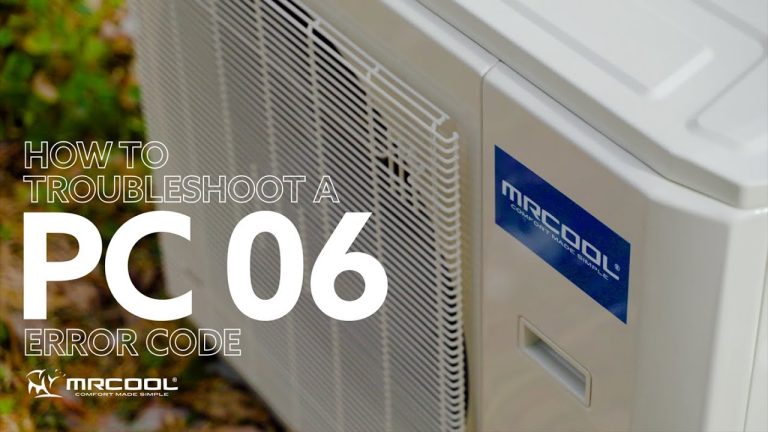[Fixed] Air Compressor Keeps Tripping Reset Button
An air compressor tripping the reset button indicates an electrical issue that needs to be addressed immediately. This could be due to a number of factors such as a faulty motor, low voltage, or a problem with the circuit breaker.
If left unresolved, it can lead to further damage and potentially cause a fire or other safety hazards. It is essential to consult a qualified technician to diagnose and rectify the problem to ensure the safe and proper functioning of your air compressor.

Common Causes And Solutions For A Tripping Air Compressor Reset Button
Air compressors are essential tools that power a wide range of equipment and machinery. However, dealing with a tripping reset button can be frustrating and disruptive. If you’re wondering why your air compressor keeps tripping the reset button, you’re in the right place.
In this section, we will explore the common causes and solutions for this issue to help you troubleshoot and resolve it effectively.
Electrical Overload Issues
- Excessive load on the electrical circuit can cause the reset button to trip.
- This can happen when the compressor is connected to a circuit that is already carrying a heavy load.
- An electrical overload can be caused by multiple devices running simultaneously on the same circuit.
Insufficient Power Supply
- Inadequate power supply is another common reason for a tripping reset button.
- If the electrical circuit providing power to the compressor does not have enough capacity, it can lead to overloading.
- Low voltage can also cause the compressor motor to draw more current, resulting in the reset button tripping.
Overheating And Overpressure
- Overheating is a typical cause of reset button tripping.
- When the compressor runs for an extended period or when the ambient temperature is high, it can lead to overheating.
- Overpressure, caused by excessive air pressure in the tank, can also result in the reset button tripping.
Malfunctioning Pressure Switch
- The pressure switch in the air compressor plays a vital role in regulating the tank pressure.
- If the pressure switch is faulty or incorrectly adjusted, it can cause the compressor to exceed the desired pressure levels, leading to the reset button tripping.
Clogged Air Filters
- Air filters are responsible for keeping the compressor’s air intake clean and free from debris.
- When filters become clogged with dirt and dust, it restricts the airflow and puts additional strain on the compressor motor.
- This strain can eventually cause the reset button to trip.
Excessive Moisture Buildup
- Moisture is a common byproduct in compressed air systems.
- Excessive moisture buildup in the tank or airlines can cause issues with the compressor’s functionality.
- Moisture can lead to corrosion, which can affect the pressure switch, motor, and other components, resulting in the reset button tripping.
Electrical Overload Issues And Solutions
Understanding The Reset Button
The reset button on an air compressor is a safety feature designed to protect the device from electrical overloads. When the reset button trips, it means that the compressor has detected an overload and has shut off power to prevent damage.
Check for Overloaded Circuit
An overloaded circuit is one of the common reasons why the reset button on an air compressor keeps tripping. Here are some key points to consider when checking for an overloaded circuit:
- Make sure the compressor is the only device connected to the circuit. If there are other heavy-duty appliances or tools sharing the same circuit, it can lead to overload.
- Calculate the total current draw of all devices on the circuit. The circuit may not be able to handle the combined load, leading to the tripping of the reset button.
- Check the circuit breaker for any signs of damage or wear. A faulty circuit breaker can cause the reset button to trip even with regular power consumption.
Inspect The Power Cord And Connections
- Check the power cord for any visible damage, such as frayed wires or exposed insulation. A damaged cord can cause electrical shorts and trigger the reset button.
- Ensure that the power cord is securely connected to both the air compressor and the power source. Loose connections can cause fluctuations in electrical flow, leading to overloads.
- Examine the connections between the power cord and the compressor’s internal wiring. Loose or poorly connected wires can create resistance, resulting in excessive heat buildup and tripping of the reset button.
Consider Using A Dedicated Circuit
- A dedicated circuit means having a separate electrical circuit exclusively for the air compressor. This eliminates the risk of other devices causing overloads.
- Consult a qualified electrician to assess your electrical panel capacity and determine if installing a dedicated circuit is possible.
- Using a dedicated circuit ensures a stable and sufficient supply of power to the air compressor, minimizing the chances of the reset button tripping.
Insufficient Power Supply And Solutions
Check voltage and amperage:
- Measure the voltage and amperage of your air compressor using a multimeter.
- Compare the readings with the manufacturer’s specifications to determine if they match.
- If the voltage or amperage is lower than recommended, it may indicate an inadequate power supply.
Upgrade electrical service:
- If your voltage and amperage readings are consistently lower than recommended, it may be necessary to upgrade your electrical service.
- Contact a licensed electrician to evaluate your current electrical system and determine if an upgrade is required.
- Upgrading your electrical service can provide the necessary power for your air compressor to function without tripping the reset button.
Use voltage drop calculations:
- Voltage drop refers to the decrease in electrical potential between the power source and the load.
- Check if a voltage drop is occurring in the circuit supplying power to your air compressor.
- Consult an electrical professional to perform voltage drop calculations and identify any issues causing inadequate power supply.
Consult with an electrician:
- If you’re unsure about the power supply requirements or how to resolve the issue, it’s always best to consult with a qualified electrician.
- An electrician can assess your specific situation, identify any power supply concerns, and provide appropriate solutions.
- They have the expertise to ensure your electrical system can handle the demands of your air compressor and prevent the reset button from tripping.
Overheating And Overpressure Issues
Air compressors are important tools for various industries, providing the power needed to operate machinery and equipment. However, if your air compressor keeps tripping the reset button, it can be frustrating and disruptive to your work. One possible cause of this issue is overheating and overpressure.
In this section, we will explore the causes of overheating and overpressure and provide some solutions to prevent this problem from occurring.
Causes of Overheating And Overpressure
- Insufficient cooling: If the cooling system of your air compressor is not functioning properly, it can lead to overheating. The cooling system is responsible for keeping the internal components of the compressor at a safe temperature, and any malfunction can result in overheating.
- Excessive pressure: If the pressure settings of your air compressor are too high, it can put excessive strain on the system, leading to overpressure. This can cause the reset button to trip as a safety measure.
- Faulty pressure relief valve: The pressure relief valve is designed to release excess pressure from the compressor. If the valve is dirty or damaged, it may not function properly, causing the pressure to build up and the reset button to trip.
- Air leaks: Air leaks in the compressor system can disrupt the proper functioning of the compressor, leading to overheating and overpressure. Leaks can occur in various parts of the system, such as hoses, fittings, and valves.
Inspect Cooling System
- Check the cooling fins and ensure they are clean and free from debris. Dirty or blocked cooling fins can hinder airflow, leading to overheating.
- Inspect the cooling fan and make sure it is functioning properly. If the fan is not working, it may need to be repaired or replaced.
- Monitor the temperature gauge of the compressor during operation. If it consistently reaches high temperatures, it indicates a problem with the cooling system that needs to be addressed.
Adjust Pressure Settings
- Consult the manufacturer’s guidelines or user manual to determine the recommended pressure range for your specific model of air compressor.
- Use a pressure gauge to check the current pressure settings of your compressor. If it exceeds the recommended range, adjust it accordingly.
- Be cautious not to set the pressure too low, as it may affect the performance and efficiency of the compressor. Finding the right balance is key.
Clean Or Replace The Pressure Relief Valve
- Inspect the pressure relief valve for any dirt, debris, or signs of damage. If it is dirty, clean it carefully using a suitable solvent or solution.
- If cleaning does not resolve the issue, consider replacing the pressure relief valve with a new one. Be sure to choose a valve that is compatible with your air compressor model.
Check For Air Leaks
- Inspect the hoses, fittings, and valves of the compressor system for any signs of leaks, such as hissing sounds or visible air escaping.
- Tighten any loose connections or replace damaged components that may be causing the leaks.
- Consider using leak detection solutions or methods to pinpoint the exact locations of the leaks and fix them accordingly.
Malfunctioning Pressure Switch And Solution
Signs Of A Faulty Pressure Switch
- Frequent tripping of the reset button: If your air compressor’s reset button keeps tripping, it may indicate a problem with the pressure switch.
- Inconsistent cycling: An irregular cycling pattern, where the compressor turns on and off frequently or fails to shut off, can be a sign of a malfunctioning switch.
- Inaccurate pressure readings: A faulty switch can produce inaccurate pressure readings, making it difficult to determine the actual pressure within the system.
- Air leaks: A damaged or worn-out pressure switch can result in air leaks, leading to reduced efficiency and potential compressor damage.
Testing The Pressure Switch
- Safety first: Turn off the air compressor and unplug it from the power source.
- Access the pressure switch: Locate the pressure switch, usually situated near the tank on the compressor.
- Check electrical connections: Ensure that the electrical connections to the switch are securely connected and free from corrosion.
- Use a multimeter: Set the multimeter to measure continuity and attach the probes to the switch terminals.
- Test for continuity: Activate the pressure switch by manually lowering or increasing the pressure. The multimeter should indicate continuity when the switch is activated and open circuit when it is not.
- Observe the switch action: Monitor the switch’s behavior as you adjust the pressure. It should turn on and off at the correct pressure thresholds.
- Compare readings: Compare the actual pressure readings with the switch’s settings to verify accuracy.
Repair Or Replacement Options
- Repair: If the pressure switch has minor issues like loose connections or debris, you may be able to repair it by cleaning, tightening connections, or replacing damaged parts.
- Replacement: For significant malfunctions or if the switch is beyond repair, replacing it with a new pressure switch is the best course of action. Ensure compatibility with your air compressor model and specifications.
Regular Maintenance For Pressure Switches
- Clean and inspect: Regularly clean the switch and inspect for any signs of wear, corrosion, or damage.
- Lubricate moving parts: Apply appropriate lubrication to ensure smooth operation of components.
- Check electrical connections: Verify that all electrical connections are secure and free from corrosion.
- Monitor pressure levels: Regularly check pressure levels to ensure the switch is functioning within the desired range.
- Follow manufacturer guidelines: Refer to the manufacturer’s instructions for any specific maintenance recommendations.
Clogged Air Filters And Solutions
Air Compressor Keeps Tripping Reset Button
Is your air compressor constantly tripping its reset button? This can be frustrating and can hinder your productivity. One common cause for this issue is clogged air filters. In this section, we will discuss the importance of clean air filters, the signs of clogged air filters, how to clean or replace them, regular maintenance practices, and the use of filter regulators to prevent this problem from occurring.
Importance Of Clean Air Filters
Clean air filters are essential for the proper functioning of an air compressor. They play a crucial role in removing impurities, such as dust and debris, from the air before it enters the compressor. Here are a few reasons why clean air filters are important:
- Improved air quality: Clean filters ensure that the air used by the compressor is free from contaminants, leading to cleaner and healthier compressed air for your tools and equipment.
- Enhanced compressor performance: By preventing debris from entering the compressor, clean air filters help maintain optimal airflow and prevent damage to internal components.
- Prolonged lifespan: Regularly cleaning or replacing air filters helps extend the lifespan of your air compressor by reducing wear and tear caused by contaminated air.
Signs of Clogged Air Filters
It is crucial to identify the signs of clogged air filters to address the issue promptly. Look out for the following indicators
- Decreased airflow: If you notice a significant decrease in the airflow from your air compressor, it could indicate that the air filters are clogged. Restricted airflow can lead to overheating and tripping of the reset button.
- Increased energy consumption: Clogged filters force the compressor to work harder to maintain the required airflow. This results in higher energy consumption, leading to increased electricity bills.
- Poor tool performance: If your tools or equipment are not performing as expected, it could be due to inadequate airflow caused by clogged air filters. Cleaning or replacing them can restore optimal tool performance.
Frequently Asked Questions
Q1: How can I troubleshoot an air compressor that keeps tripping the reset button?
A: You can follow these steps to troubleshoot the problem
- Check the air filter and clean or replace it if necessary.
- Ensure the air pressure settings are within the recommended range.
- Verify if the compressor is placed in a well-ventilated area to prevent overheating.
- Clean any dirt or debris buildup on the motor and cooling fins.
- Check the power supply for any voltage issues.
- If the problem persists, contact a qualified electrician or compressor technician to inspect for electrical or mechanical faults.
Q2: Can electrical problems be the reason behind the air compressor’s reset button tripping?
A: Yes, electrical problems like short circuits or a faulty motor can cause the reset button to trip. It is crucial not to attempt electrical repairs unless you have the necessary expertise. Contact a qualified electrician or compressor technician for diagnosis and repairs.
Q3: How can I determine if low voltage is causing the air compressor’s reset button to trip?
A: Use a voltage meter to check if the compressor is receiving the correct voltage as specified in the user manual. If the voltage is consistently low or fluctuating, contact an electrician to address the power supply issue.
Q4: What mechanical faults within the compressor can cause the reset button to trip?
A: Mechanical faults such as a seized motor or a malfunctioning pressure switch can lead to the reset button tripping. In such cases, it’s best to have the compressor examined and repaired by a qualified technician.
Q5: Can I fix electrical or mechanical issues in the air compressor myself?
A: It’s not advisable to attempt electrical or complex mechanical repairs unless you have the necessary expertise. It’s safer to contact a qualified professional to diagnose and repair any such issues.
Q6: How can I prevent the air compressor’s reset button from tripping frequently?
A: To prevent frequent tripping of the reset button, follow these preventive measures
- Regularly clean or replace the air filter.
- Ensure the compressor is operating within its recommended pressure range.
- Maintain a well-ventilated area for the compressor to prevent overheating.
- Schedule regular maintenance checks by a qualified technician.
Q7: When should I seek professional help for my air compressor’s reset button tripping issue?
A: If you have attempted basic troubleshooting and the problem persists, or if you are unsure about the cause, it’s best to seek the assistance of a qualified electrician or compressor technician. They can accurately diagnose the issue and provide appropriate solutions.
Conclusion
If your air compressor keeps tripping the reset button, it can be frustrating and inconvenient. However, by understanding some common causes and taking appropriate measures, you can easily resolve this issue. First, make sure you have the right size circuit breaker for your air compressor.
A breaker that is too small can cause it to trip repeatedly. Additionally, check for any loose connections or faulty wiring that may be causing the problem. Regular maintenance, such as cleaning the air filter, draining the moisture from the tank, and checking the pressure switch, can also help prevent tripping.
If the issue persists, it is best to consult a professional to diagnose and fix the problem. Taking these steps will ensure that your air compressor operates smoothly and efficiently, minimizing downtime and maximizing productivity.

![[Answered] Can a Diffuser Be Used as a Humidifier for Plants?](https://airanswer.com/wp-content/uploads/2023/09/Can-a-Diffuser-Be-Used-as-a-Humidifier-for-Plants-768x431.webp)

